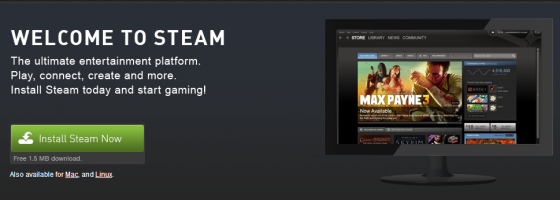The ever growing issue of discoverability in the video game market continues to be a problem for game makers. The Steam Direct changes have not been able to stem the tide of the storefront being flooded with games. With more digital stores trying to take on Steam, I want to bring back the debate about standards, but this time for the stores themselves.
Quality Control:
A store, regardless of being physical or digital is the middleman between consumers and goods. The store’s job is to present quality merchandise that the consumer will be interested in buying. The store must adhere to some semblance of quality control. No one wants to buy something dangerous, and no store wants to be held liable.
In the old days of the Game Industry, retail stores were the first, last and only means of buying games. Whether you went to GameStop, Babbages, Funco Land and so on, if the store didn’t carry a game, then that game didn’t exist. This arrangement gave stores control over what games were allowed in the public space.
This led to censorship and games having to be reworked for the US audiences. However, this also meant that games that were low quality weren’t going to be on store shelves. The control over what could be purchase was a major impetus for why many developers went digital.
The Digital Difference:
As we’ve talked about before, Steam and digital games have been a monumental change to game development. Suddenly, you could have infinite copies of a game available that could be purchased at any time.
With rare exception, any game could be posted to a store like Itch.Io or Steam. In today’s market, we have dozens of games being released daily around the internet and on IOS. Unfortunately, with all these games being released, discoverability has become a big problem.
There is an unspoken rule that a title has about 30 to 45 days after release to make the bulk of their profit. What we’re seeing is that window is getting tighter. Not only that, but there is a perception issue going on with digital stores and the waves of game releases.
What’s What?
At the end of the day, digital stores only care about one thing: Making Money. More games on a platform means more chances for that store to earn a profit. Over the last few years with greenlight, early access and now Steam Direct, Valve has effectively opened up Pandora’s Box of game releases.
On Steam, I see games from AAA developers being given the same coverage as a random Indie game. I know that some of you after reading that will say, “That’s good, right?” but it’s not. When everything is given the same level of coverage, it creates the perception that both have been given the same amount of work and quality control.
One of the biggest issues with consumer knowledge when it comes to the Game Industry is about the work that’s done. Because every game is treated the same, the consumer expects the same level of quality, content and price from everyone.
There is a reason we have stores that sell different qualities of goods or sections things off: So that the consumer knows what they’re buying. For games that are already well known, discoverability doesn’t concern them, but for everybody else it’s a big deal.
And that takes me to the big point for today and the controversial topic — Should Digital Stores Have Standards?
The Gatekeeper:
This point should be obvious: The more products being offered at once, the harder it is for something to stand out. And when your store has no measure of quality control, it can lead to consumers feeling betrayed.
Going back to the last section, when people see a $49 game being marketed right next to a $4 game, they associate the two as being similar in terms of product; however, you and I know that’s not the case. At the end of the day, stores are liable for the products they sell; shouldn’t digital stores be held to similar standards?
When we talked about the changes to Steam Direct I brought up why a gatekeeper was important. Getting on Steam or Humble Bundle or any other store is not a privilege, it should be proof that your game is of a standard that warrants being there.
I know that I will annoy some Indie developers reading this, but the option is still available to sell your game on your own. Whenever we try to talk about standards in the Game Industry, it can become a heated debate with regards to limiting video games to predefined definitions.
However, digital stores are different. In order for a store to protect and project a brand, they need to have standards. What those standards should be is the tough question.
One suggestion I heard would be to have an “Indie” and “AAA” grouping for games on digital stores. While that sounds like a good idea, we then run into the other big debate: “What makes a studio Indie?”
I do feel that there should be an agreed upon list of quality standards for a digital store. No matter what we set, there will be some games caught in the crossfire. For you, what do you think are acceptable standards?
The Next Steam?
No matter how many new digital stores pop up, they will all fall into the same umbrella as Steam if they don’t have any kind of quality control. I know that Indie Developers like the idea of not having rules or restrictions, but it’s hard to stand out when everything is being lumped together.




